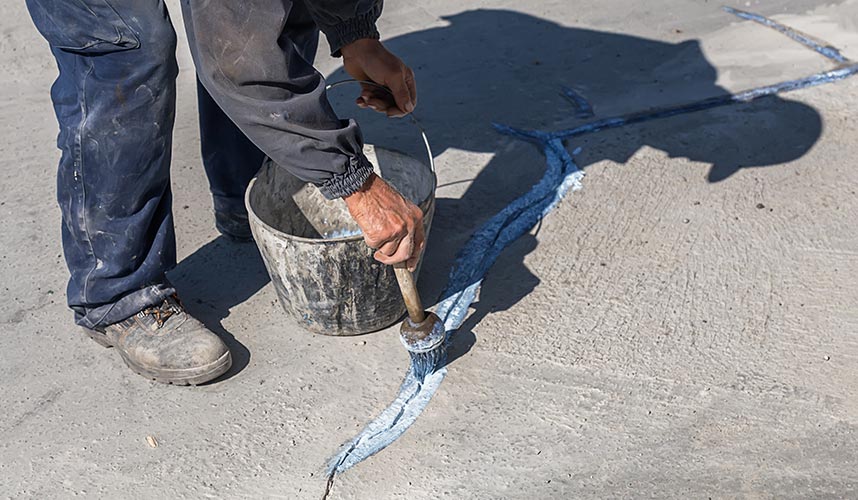For decades the industry standard was to repair sunken concrete by removing the slab and pouring new concrete. Although this solution is still common practice and in some cases the only viable solution, it can be both expensive and time-consuming. Why replace a sunken slab when you can simply raise it?
“Slabjacking” is a concrete repair technology that dates back to the early twentieth century, when contractors used hydraulic pressure to pump a grout mixture under sunken concrete slabs to raise them back up. These early adapters used a mixture of soils often combined with limestone or cement to create a mud-like material. This technique is often referred to as mudjacking and is still being used to this day. The reason we no longer recommend mudjacking as a long-term concrete solution is due to the materials used in this process. The mixture is very heavy (as much as 100 lbs per cubic foot) which can add more weight to already compromised soil, in turn potentially contributing to the original problem. The soil mix is also very susceptible to deterioration; water can cause the material to break down and erode, resulting in further settlement.
Polyurethane slabjacking is a cost-effective and time-efficient concrete repair solution. Foundation wall cracks can be sealed from inside using polyurethane injection that will bond the wall together and keep moisture out. Sunken sidewalk slabs can quickly and easily be restored to their original placement. For those looking to simply get rid of those unsightly concrete cracks, no problem. Minor sidewalk cracks can be cleaned and caulked or patched with non-shrinking grout, improving the overall appearance. Let our expert team at Maryland Concrete Leveling help determine the best solution to meet your needs and your budget.









